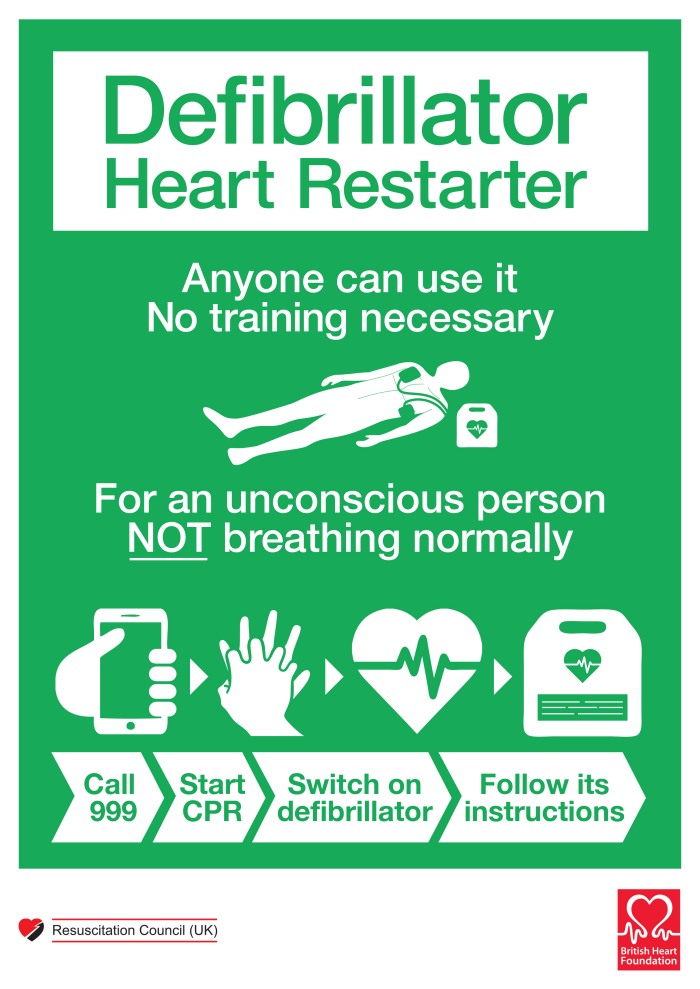Defibrillators explained
Cardiac arrest can happen to anyone
When a heart stops, you're up against the clock
Survival rates fall by 10% every minute without action
Using a defibrillator within three minutes can increase chances of survival by as much as 70%
Defibrillators save lives
The greater the number of defibrillators in a town the greater the chances of survival as it means there is a good chance one can be located within minutes.
Our campaign is to raise money for the installation of additional Automated External Defibrillators (AEDs) which will be housed in a cabinet which is accessible by the public 24 hours a day.
A defibrillator is a device that gives a high energy electric shock to the heart through the chest wall to someone who is in cardiac arrest.
This high energy shock is called defibrillation, and it's an essential life saving step in the chain of survival.If you come across someone who has had a cardiac arrest, it’s vital to call 999 and start CPR. Then switch on the defibrillator and follow the instructions.
How they work and their benefits
Below is a summary of how a defibrillator works and their benefits provided in a guide by the Resuscitation Council (UK) and British Heart Foundation. Download the full guide.
Sudden cardiac arrest (SCA) is a leading cause of premature death, but with immediate treatment many lives can be saved. SCA occurs because the electrical rhythm that controls the heart is replaced by a chaotic disorganised electrical rhythm called ventricular fibrillation (VF). The quicker VF can be treated by defibrillation the greater the chance of successful resuscitation. Seconds count, and the ambulance service is unlikely to arrive quickly enough to resuscitate most victims.
Many SCA victims can be saved if persons nearby recognise what has happened, summon the ambulance service with the minimum of delay, perform basic cardiopulmonary resuscitation (particularly chest compressions) and use an AED to provide a high energy electric shock to restore the heart’s normal rhythm. Each of these stages is a link in a chain of events that provide the best chance of success, but the critical factor is the speed with which the shock is given
AEDs are easy to use, compact, portable and very effective. They are designed to be used by lay persons; the machines guide the operator through the process by verbal instructions and visual prompts. They are safe and will not allow a shock to be given unless the heart’s rhythm requires it. They are designed to be stored for long periods without use and require very little routine maintenance.
AEDs have been used successfully by untrained persons, and lack of training should not be a deterrent to their use.
Defibrillators explained by British Heart Foundation


